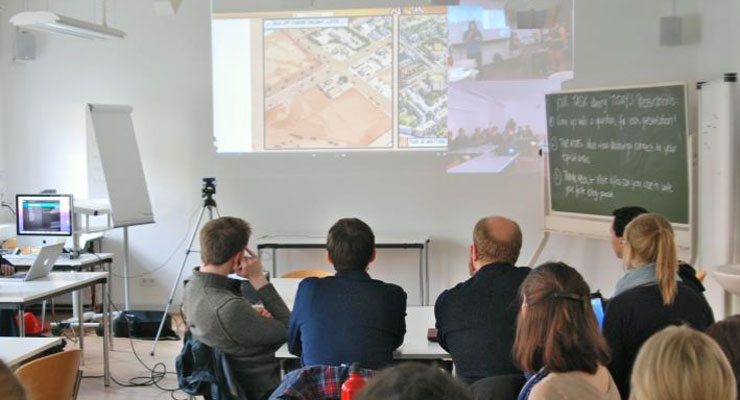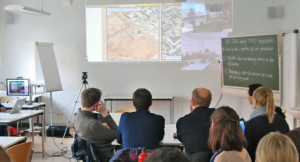
Video Conferencing for Synchronous Sessions – Food for Thought
“Synchronous video interaction can make learning more personal by providing a close approximation of the human, one-on-one experience…” (Educause, 2013)
 One of the most exciting aspects of video conferencing technology is the ability to conduct your class in real-time, regardless of location. Imagine the possibilities when students from around the country or even the world can learn as if they were in the same classroom. Like all new technologies however, there are some important considerations an instructor should take into account before jumping off the deep end. Some basic preparation will allow the magic to happen without the headaches that can come with it!
One of the most exciting aspects of video conferencing technology is the ability to conduct your class in real-time, regardless of location. Imagine the possibilities when students from around the country or even the world can learn as if they were in the same classroom. Like all new technologies however, there are some important considerations an instructor should take into account before jumping off the deep end. Some basic preparation will allow the magic to happen without the headaches that can come with it!
Here are some things to consider:
- Have a game plan – Before the session have a clear understanding of your audience and what you wish them to accomplish. This will help you plan activities that support your objectives and keep the session focused.
- Know your space – Understanding the ins and outs of your physical space is crucial! It directly affects the audio and video quality of your session and what is transmitted to your other locations. Take time to find the best acoustics and video angles beforehand. This will foster better quality presentation and allow things to stay on track when you go live.
- Check your tech – Make sure your equipment is working properly and practice speaking to the camera (or with a microphone) before your session. This will help you work out potential bugs, but will also help familiarize yourself and whoever else is in front of the camera with the setup prior to the event.
- Be an M.C. – Someone will need to “run the show”. Designate someone who will moderate discussion, indicate who should have the floor, segue from one activity to the next, and inform the audience about what will occur. This will ensure your session runs smoothly and with minimal interruption.
- Evaluate your communication situation – There is an important distinction between video conferencing between two sites and multiple sites.Take a look at these suggestions from the AT&T Knowledge Network to get tips on how to handle a multipoint conference.
- Plan the protocol – As simple as it might sound it behooves one to establish a protocol students should follow during the session. (i.e. raising hands, microphone always has the floor etc.)
Following these simple guidelines is a great way to ensure your sessions run without a hitch. ASU’s Global Classroom is an excellent example of one of several innovative classrooms operating in such a manner. In this project students from ASU learn alongside students at Leuphana University located in Lüneburg Germany, with the use of online materials and synchronous video sessions to tackle the topic of sustainable cities.
How are you using video communication with your students and what role do you see it playing in the future?
Sources
- 7 Things You Should Know About Video Communication | EDUCAUSE.edu. (2013, March 11). EDUCAUSE Homepage | EDUCAUSE.edu. Retrieved March 15, 2013, from http://www.educause.edu/library/resources/7-things-you-should-know-about-video-communication
Leave a Comment
Your email address will not be published. Required fields are marked *